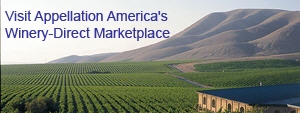
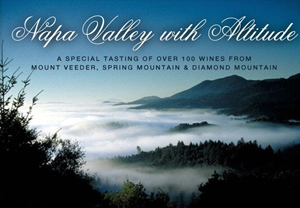
The “Napa Valley with Altitude” tasting in San Francisco was a showcase of terroir distinctions.
Napa Valley High:
Mountains of Difference
A recent comparative tasting of wines from the three Napa sub-appellations that comprise the Mayacamas Mountain range proved when it comes to Napa wines there are mountains of differences.
by
Roger Dial
April 30, 2008
 here is a suspicion - no, call it an anxiety - that Napa is Napa, and that the wines of the 14 sub-appellations of the Napa Valley AVA are generally indistinguishable. At the same time, many think it was a mistake to sub-divide a good thing. That’s not just in the Napa Valley; it’s a common sentiment everywhere across the continent that “separatism” within the AVA system has allegedly diluted the marketing image - and often challenged the regional organization authority - of the parent appellation.
here is a suspicion - no, call it an anxiety - that Napa is Napa, and that the wines of the 14 sub-appellations of the Napa Valley AVA are generally indistinguishable. At the same time, many think it was a mistake to sub-divide a good thing. That’s not just in the Napa Valley; it’s a common sentiment everywhere across the continent that “separatism” within the AVA system has allegedly diluted the marketing image - and often challenged the regional organization authority - of the parent appellation.
The anti-separatists point the finger of blame at either the terroir-ist pride of those winegrower/producers who pushed for the diverse AVA certifications; or the mega-corporations who stand to gain by elaboration of a whole mosaic of stratified appellations as a long-term Burgundy-style marketing strategy
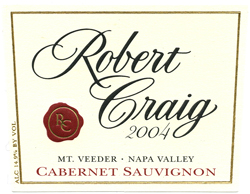 enabling them to flog pretty much the same wine under “bigger” and “lessor” appellation designations to fill different niches and move more inventory.
enabling them to flog pretty much the same wine under “bigger” and “lessor” appellation designations to fill different niches and move more inventory.
But there is an even deeper, generally unspoken, anxiety that despite all the self-evident terroir differences in the dramatically diverse Napa Valley AVAs, winemaking technologies, driven by oenological expediency or market-oriented fashion, have trumped terroir so thoroughly in America’s most famous wine mega-region that there are no real significant differences between the appellations – at least at the bottle end of the business. This may or may not be true, but the fact is that “circling the wagons” around the Napa parent designation, as representing a wine style that works in the marketplace, has become a self-fulfilling prophesy of homogenization to some extent.
Well, from what we saw and tasted in San Francisco at the “Napa Valley with Altitude Tasting”, the movement to define-cum-distinguish the sub-appellations, in both image and taste dimensions, continues to build steam. And the “mountain folk” are clearly in the vanguard. The three mountain appellations (Mount Veeder, Spring Mountain District, and Diamond Mountain District) of the Mayacamas Range, which
 defines Napa’s western border, have allied to put on this particular event, based on some obvious commonalities, not least being their pretty underdeveloped place-brand recognition in the marketplace. Significantly, however, the mountaineers were positioned by appellation in three different rooms for the pour, clearly suggesting that there were differences to be explored and appreciated.
defines Napa’s western border, have allied to put on this particular event, based on some obvious commonalities, not least being their pretty underdeveloped place-brand recognition in the marketplace. Significantly, however, the mountaineers were positioned by appellation in three different rooms for the pour, clearly suggesting that there were differences to be explored and appreciated.
The commonalities are pretty obvious: terroirs marked by elevation; difficult terrain necessitating markedly different agro-practices, exploiting a diverse patchwork of microclimates; and, perhaps most important, a small-is-better ownership demographic that drives the positive energy of terroir-ism in every great winegrowing region around the globe.
Along with their mountain brethren across the way on Howell Mountain and Atlas Peak, altitude is as much a passionate attitude as it is a geologic given. What these appellations are begins with what they are not - that is, “The Valley”. This event gave the wines right across the elevated appellations an opportunity to bring that point home strong and clear. Mountain fruit quite simply is not grown on ground anything like that on the flatter, more fertile Valley floor. The rugged and rocky nature of the terrain reflects clearly in the wines, which are typically more angular with less flesh to conceal their boney structure.
Eighty percent of the 100+ wines poured at this event surely deserve recommendation for their individual quality. Frankly, we can’t recall any tasting on this scale where the quality quotient ran so high, nor was that our experience in the several Discovery Tastings APPELLATION AMERICA has conducted with sub-appellation Napa winemakers.
We are only able here to single out a few wines that perhaps will help to delineate the regional progress and the trends in defining the character of Napa mountain wines, generally, and these sub-appellations in particular. Indeed, there were without question, themes of commonality running through the wines of each room (appellation) at this event.
Here are some highlights from my notes, combined with those of Managing Editor, Adam Dial and Deputy Managing Editor, Michael Lasky:
Mount Veeder: Wines of classic structure.
Whites with the kind of bracing acidity and minerality not easily achieved in their valley floor counterparts. And the reds – a scattering of Syrah, Merlot, Zinfandel, but mostly Cabernet Sauvignon – were a model of impeccable balance and harmony between elegant fruit, firm tannins, and focused acidity.Brandlin Vineyard – The 2004 Cabernet shows perhaps more independent flavor stylizing than any other wine at the tasting, but the mountain fruit from one of the oldest vineyards in the highlands is clearly enabling.
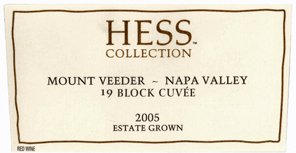
The Hess Collection – 2005 19 Block Cuvee – elegance and power combined into a wine that you can taste and talk about for decades.
Robert Craig Winery – Two vintages of the venerable winemaker’s Mt. Veeder Cab bottling – 2004 and 2005. Both solid examples of how Robert Craig continues to craft wines that are uninfluenced by the latest trends. Classic style and balance.
Lagier-Meredith – Mountain Syrah specialist of the first order – of the two wines being poured (04 and 05) the 2004 seemed to be more sharp and focused at this juncture, but the 2005 should catch up with a bit of time.
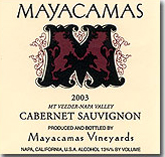 Mayacamas Vineyards – When you’ve been doing it as long as these guys, you are sure to get it right. The important thing here is that Mayacamas has been doing it the same outstanding way since inception in the 1960s. Young and older versions of both Cab and Chard were offered to demonstrate the hallmark of the ho
Mayacamas Vineyards – When you’ve been doing it as long as these guys, you are sure to get it right. The important thing here is that Mayacamas has been doing it the same outstanding way since inception in the 1960s. Young and older versions of both Cab and Chard were offered to demonstrate the hallmark of the ho










 READER FEEDBACK: To post your comments on this story,
READER FEEDBACK: To post your comments on this story,


